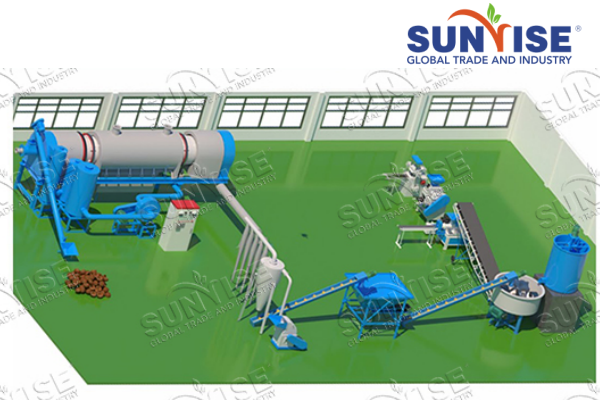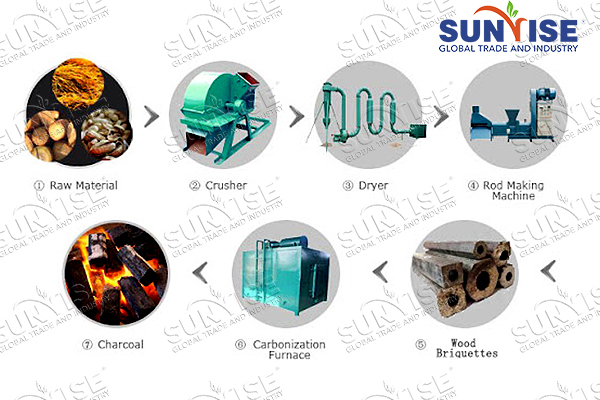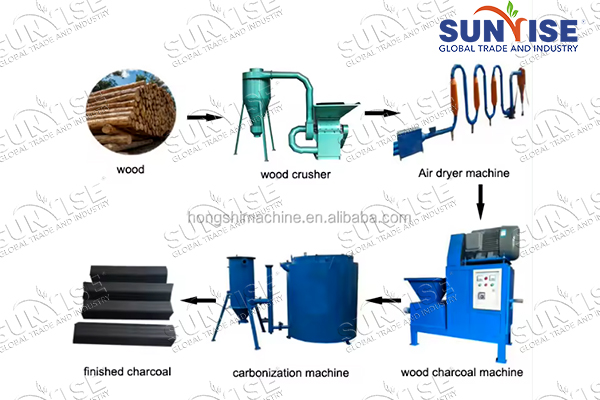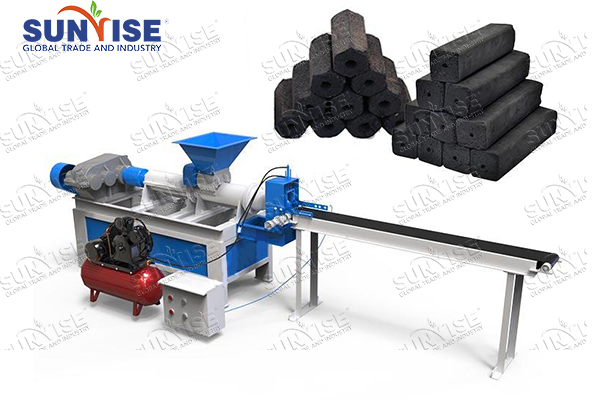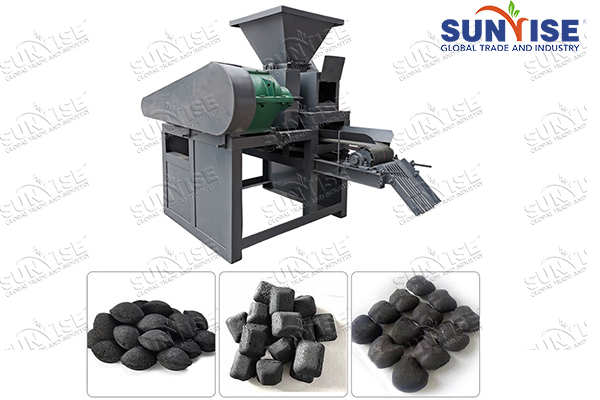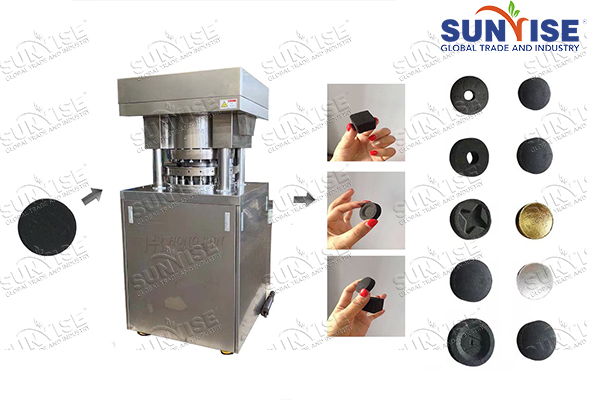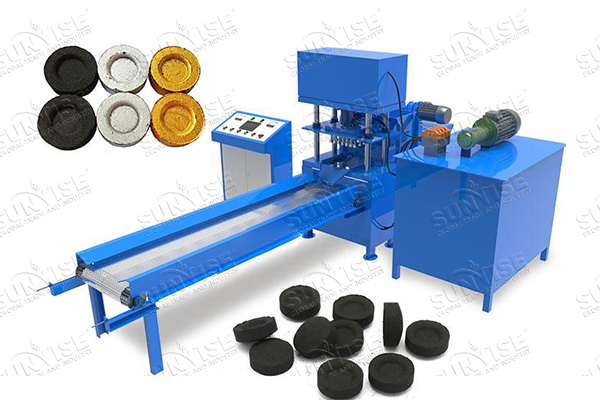แกลบเป็นเกราะป้องกันรอบเมล็ดข้าว. เป็นของเสียที่ได้รับเป็นตันในช่วงฤดูเกี่ยวข้าว. และส่วนประกอบที่มีมากที่สุดในแกลบคือเซลลูโลส, ลิกนิน, และซิลิกา. เนื่องจากมีเปอร์เซ็นต์ลิกนินสูง (วัสดุยึดเกาะตามธรรมชาติ) และมีปริมาณน้ำน้อย, แกลบเป็นวัตถุดิบอันทรงคุณค่าในการ ทำถ่านอัดก้อน สำหรับใช้ในครัวเรือนหรืออุตสาหกรรม. สำหรับสิ่งนี้, ในวันที่ 15 มิถุนายน 2024, ลูกค้าจากประเทศญี่ปุ่นต้องการซื้อชุดเครื่องอัดก้อนถ่านแกลบ. ต่อไปนี้เป็นรายละเอียดเฉพาะของการสื่อสารในกรณีนี้:
สูงสุด 2 กรรมวิธีทำถ่านอัดก้อนแกลบ
ลูกค้าชาวญี่ปุ่นรายนี้ต้องการทราบวิธีการทำถ่านไบโอชาร์แกลบแกลบ. โดยทั่วไป, มี สองวิธีในการทำถ่านอัดก้อน จากแกลบ. วิธีหนึ่งคือการทำให้แกลบกลายเป็นถ่านโดยตรงผ่านเตาถ่าน, แล้วอัดถ่านแกลบให้เป็นก้อน. อีกวิธีหนึ่งคืออัดแกลบให้เป็นก้อนก่อนโดยใช้เครื่องอัดก้อนแกลบ, แล้วถ่านแกลบอัดก้อนให้เป็นถ่าน.
ถ่านก่อน & จากนั้นก็ขึ้นรูป
วิธีนี้เหมาะกับลูกค้าที่มีงบประมาณเพียงพอ. เนื่องจากแกลบมีขนาดเล็กมากและถ่านเพียงชนิดเดียวที่เหมาะกับขนาดอาหารนี้คือก เตาเผาคาร์บอนอย่างต่อเนื่อง – 5-20 มม.. โดยปกติ, แกลบซึ่งเป็นวัสดุอนุภาคละเอียดไม่จำเป็นต้องบดเพิ่มเติม, คุณสามารถให้อาหารมันได้โดยตรง. หลังจากนั้น, คุณสามารถใช้เครื่องบดล้อถ่านเพื่อทำผงถ่านได้. ในที่สุด, มีสี่คน เครื่องทำถ่านอัดก้อน เพื่อให้คุณเลือกผลิตถ่านไบโอชาร์แกลบแกลบ.
ขึ้นรูปก่อน & จากนั้นคาร์บอไนเซชัน
ที่ ปริมาณความชื้น ในแกลบก็ขึ้นอยู่กับ 15%. อย่างไรก็ตาม, แนะนำว่าวัตถุดิบควรมี 8% ถึง 10% ความชื้นในนั้น. ดังนั้นคุณจึงต้องมีเครื่องอบผ้าเพื่อลดปริมาณความชื้น. และเพื่อลดต้นทุนการอัดก้อนแกลบ, นอกจากนี้ยังสามารถวางไว้ใต้แสงแดดเพื่อลดความชื้นผ่านการระเหย. เนื่องจากแกลบมีขนาดเล็ก, ดังนั้นจึงไม่จำเป็นต้องบดขยี้. หลังจากการอบแห้ง, คุณสามารถป้อนมันเข้าไปได้โดยตรง เครื่องอัดรีดถ่าน. ในที่สุด, ผ่านการใช้งาน เครื่องคาร์บอน หรือเตาถ่านชนิดแบทช์, คุณสามารถรับถ่านไบโอชาร์แกลบแกลบอัดก้อนได้.
ถ่านอัดแท่งแกลบข้าวราคาเท่าไหร่คะ?
จากนั้นลูกค้าจากประเทศญี่ปุ่นก็อยากทราบราคาของโรงงานถ่านไบโอชาร์แกลบแกลบด้วย. และต้นทุนการผลิตถ่านอัดก้อนแกลบมักจะแตกต่างกันไปตามกำลังการผลิต, การกำหนดค่าอุปกรณ์และปัจจัยอื่นๆ อีกมากมาย. ที่นี่เราจะแสดงราคาของ 500-1000 กิโลกรัมต่อชั่วโมงสายการผลิตถ่านอัดก้อนแกลบขนาดเล็ก, 1-10 t/h สายการผลิตถ่านไบโอชาร์แกลบแกลบและ 10-30 ระบบการผลิตถ่านอัดก้อนแกลบขนาดใหญ่ t/h สำหรับการอ้างอิงของคุณ.
500-1000 กก./ชม
- 600-1050㎡
- (อ้างอิง)
1-10 ไทย
- 1250-3000㎡
- (อ้างอิง)
10-30 ไทย
- 3000-4000㎡
- (อ้างอิง)
มีแผนการทำถ่านอัดก้อนแกลบลงทุนต่ำกว่าหรือไม่?
แน่นอน. ข้างต้นเป็นราคาของเครื่องแผนธุรกิจที่มีการกำหนดค่าสูงสุด. นอกจากนี้, เราสามารถเสนอการออกแบบพื้นฐานได้สองแบบ. ตัวอย่างเช่น, สำหรับเตาถ่านพื้นฐานหนึ่งเตา + เครื่องบดล้อ + เครื่องทำถ่านอัดก้อน, คุณเพียงแค่ต้องเตรียมตัว $5,000-$23,000 (คาร์บอนไดออกไซด์ก่อน & แล้วจึงขึ้นรูปด้วยวิธีการ). สำหรับการออกแบบอื่น, ด้วยเครื่องอัดรีดถ่าน + ยกหรือ เตาเผาคาร์บอนประเภทแบทช์ (ขึ้นรูปก่อน & จากนั้นจึงใช้วิธีคาร์บอไนเซชัน). เกี่ยวกับ $ 8,000-$23,000.
ถ่านอัดก้อนแกลบจากเครื่องจักรซันไรส์ที่ผลิตนั้นมีประโยชน์อย่างไร?
ในที่สุด, ลูกค้าชาวญี่ปุ่นเตรียมรับผลกำไรเพิ่มเติมจากถ่านไบโอชาร์แกลบเหล่านี้. เขาจึงขอให้เราใช้ถ่านอัดแท่งแกลบ. นอกจากจะใช้เป็นเชื้อเพลิงแล้ว, ถ่านอัดก้อนแกลบยังใช้กันอย่างแพร่หลายในอุตสาหกรรมและการเกษตร.
สายการผลิตถ่านอัดก้อนแกลบเป็นทางเลือกที่เหมาะสำหรับการผลิตผู้เริ่มต้น. แต่ถ้าคุณต้องการ ผลิตถ่านไบโอชาร์แกลบแกลบขนาดเล็ก, คุณสามารถเลือกแผนการผลิตถ่านอัดแท่งถ่านแกลบขนาดเล็กของเราได้.
